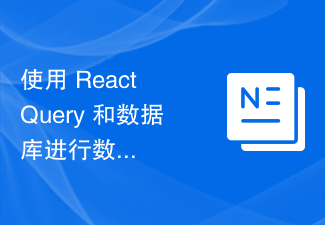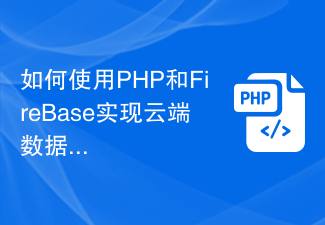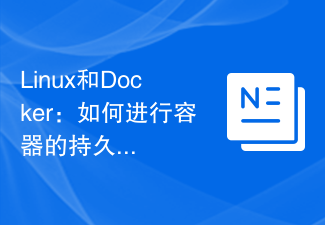
Oracle service introduction and application scenario analysis
Oracle is a world-renowned database software company. Its product Oracle Database is the industry's leading relational database management system (RDBMS). ). Oracle Database has the characteristics of high performance, high availability, and strong security, and is widely used in enterprise-level systems. This article will introduce the basic services of Oracle Database and some common application scenarios, and attach some specific code examples.
1. Oracle service introduction
- Data storage service: Oracle Database provides reliable data storage services that can store structured data, semi-structured data and unstructured data. Users can operate the database through SQL language to implement operations such as adding, deleting, modifying, and querying data.
- Data management services: Oracle Database provides the function of managing database objects, including tables, indexes, views, stored procedures, etc. Users can create, modify and delete these database objects according to business needs to achieve data management and maintenance.
- Data security service: Oracle Database has a powerful data security mechanism, including user rights management, data encryption, access control and other functions. Users can set user permissions and encrypt sensitive data to ensure data security.
- Data backup and recovery service: Oracle Database provides a complete data backup and recovery mechanism. Users can avoid data loss by backing up data and respond to unexpected situations by restoring data.
2. Analysis of Oracle application scenarios
- Enterprise data management: Oracle Database is widely used in enterprise-level systems to manage the core data of enterprises. Enterprises can use Oracle Database to store and manage various types of data to achieve centralized management and rapid retrieval of data.
- Online transaction processing: Oracle Database is suitable for application scenarios with high requirements for transaction processing, such as financial systems, e-commerce platforms, etc. Oracle's ACID transaction features ensure data consistency, isolation, durability and atomicity.
- Data analysis and reporting: Oracle Database provides rich data analysis functions. Users can perform data query and analysis through SQL statements, and generate various reports and data visualization displays.
- Cloud database service: Oracle provides a cloud database service, Oracle Cloud, which deploys Oracle Database on the cloud to provide high-availability, high-performance database services and flexible database solutions for enterprises.
3. Code Example
The following is a simple code example for creating and querying Oracle database tables:
-- 创建表
CREATE TABLE employee (
emp_id NUMBER PRIMARY KEY,
emp_name VARCHAR2(50),
emp_salary NUMBER
);
-- 插入数据
INSERT INTO employee VALUES (1, 'Alice', 5000);
INSERT INTO employee VALUES (2, 'Bob', 6000);
INSERT INTO employee VALUES (3, 'Charlie', 7000);
-- 查询数据
SELECT * FROM employee;The above code example demonstrates how to create a name Insert data into the employee's table and perform query operations.
Summary:
This article introduces the basic services and application scenarios of Oracle Database, and demonstrates the importance of Oracle in enterprise-level systems. Through the above introduction and code examples, I hope readers will have a deeper understanding of Oracle database and be able to flexibly apply it in actual projects.
The above is the detailed content of Oracle service introduction and application scenario analysis. For more information, please follow other related articles on the PHP Chinese website!
 PHP中的数据备份May 24, 2023 am 08:01 AM
PHP中的数据备份May 24, 2023 am 08:01 AM在进行Web开发的过程中,数据的存储和备份无疑是非常重要的一环。面对万一出现的数据丢失或恢复需要,备份是非常必要的。对于PHP这种开源的后端语言,数据的备份同样也有许多可选的方案,下面我们就来详细了解一下PHP中的数据备份。一、数据库备份1.1MYSQLdump工具MYSQLdump是一个备份MYSQL数据库的命令行工具,它通过执行SQL语句将整个数据库或
 使用 React Query 和数据库进行数据管理:最佳实践指南Sep 27, 2023 pm 04:13 PM
使用 React Query 和数据库进行数据管理:最佳实践指南Sep 27, 2023 pm 04:13 PM使用ReactQuery和数据库进行数据管理:最佳实践指南引言:在现代的前端开发中,管理数据是一个非常重要的任务。随着用户对高性能和稳定性的需求不断增加,我们需要考虑如何更好地组织和管理应用的数据。ReactQuery是一个功能强大且易于使用的数据管理工具,它提供了一种简单而灵活的方式来处理数据的获取、更新和缓存。本文将介绍如何使用ReactQ
 如何使用PHP和FireBase实现云端数据管理Jun 25, 2023 pm 08:48 PM
如何使用PHP和FireBase实现云端数据管理Jun 25, 2023 pm 08:48 PM随着互联网的快速发展,云端数据管理已成为越来越多企业和个人的必备工具。而PHP和Firebase无疑是两个非常强大的工具,可以帮助我们实现云端数据管理。接下来,本文将会介绍如何使用PHP和Firebase实现云端数据管理。什么是FirebaseFirebase是一个由Google提供的云服务平台,旨在帮助开发人员快速构建出高质量、高可靠性的Web应用程序。F
 Linux和Docker:如何进行容器的持久化存储和数据管理?Jul 29, 2023 am 11:49 AM
Linux和Docker:如何进行容器的持久化存储和数据管理?Jul 29, 2023 am 11:49 AMLinux和Docker:如何进行容器的持久化存储和数据管理?在容器化技术的应用中,容器的持久化存储和数据管理是非常重要的一环。本文将介绍如何在Linux和Docker中实现容器的持久化存储,并提供相应的代码示例。一、Docker中的容器持久化存储在Docker中,容器是通过镜像来创建的,而镜像本身是只读的。因此,当容器被删除后,其内部的数据也会随之丢失。为
 有效防止Localstorage数据丢失的方法Jan 13, 2024 am 10:25 AM
有效防止Localstorage数据丢失的方法Jan 13, 2024 am 10:25 AM如何避免Localstorage数据丢失?随着Web应用程序的发展,数据的持久化成为了一个重要的问题。而Localstorage是一种非常常用的浏览器提供的数据持久化方案。但是,由于各种原因,LocalStorage中存储的数据有可能会丢失。本文将介绍几种避免LocalStorage数据丢失的方法,并提供具体的代码示例。一、定期备份数据定期备份数据是避免Lo
 人工智能:人工神经网络的应用场景知识介绍Apr 12, 2023 am 11:02 AM
人工智能:人工神经网络的应用场景知识介绍Apr 12, 2023 am 11:02 AM今天给大家聊一聊人工神经网络在几个领域的应用场景。一、信息领域应用1.1 信息处理人工神经网络可以模仿或者代替与人的思维相关的功能,实现问题求解、问题自动诊断,从而解决传统方法所不能或难以解决的问题,场景:智能仪器、自动跟踪监测仪器、自动报警系统、自动故障诊断系统等方面。1.2 模式识别模式识别主要是对事物或现象的各种形式的信息处理和分析,从而可以达到对事物或现象进行描述、辨认、分类、解释的过程。模式识别主要包括统计模式识别和结构模式识别方法,其中人工神经网络是模式识别的常用方法。场景:语音识别
 Vue项目中如何进行数据的本地存储和管理Oct 08, 2023 pm 12:05 PM
Vue项目中如何进行数据的本地存储和管理Oct 08, 2023 pm 12:05 PMVue项目中数据的本地存储和管理是非常重要的,可以使用浏览器提供的本地存储API来实现数据的持久化存储。本文将介绍如何在Vue项目中使用localStorage来进行数据的本地存储和管理,并提供具体的代码示例。初始化数据在Vue项目中,首先需要初始化需要进行本地存储的数据。可以在Vue组件的data选项中定义初始数据,并通过created钩子函数来检查是否已
 MySQL和PostgreSQL:如何最佳地管理大型数据集?Jul 12, 2023 pm 02:52 PM
MySQL和PostgreSQL:如何最佳地管理大型数据集?Jul 12, 2023 pm 02:52 PMMySQL和PostgreSQL:如何最佳地管理大型数据集?随着时代的发展,数据量的增长速度越来越快,特别是大型企业和互联网公司的数据库。在这种情况下,有效地管理和处理大规模的数据集变得至关重要。MySQL和PostgreSQL是两个最受欢迎和广泛使用的关系型数据库管理系统,本文将探讨如何在这两个数据库中最佳地管理大型数据集。索引的优化在处理大量数据时,索引


Hot AI Tools

Undresser.AI Undress
AI-powered app for creating realistic nude photos

AI Clothes Remover
Online AI tool for removing clothes from photos.

Undress AI Tool
Undress images for free

Clothoff.io
AI clothes remover

AI Hentai Generator
Generate AI Hentai for free.

Hot Article

Hot Tools

SecLists
SecLists is the ultimate security tester's companion. It is a collection of various types of lists that are frequently used during security assessments, all in one place. SecLists helps make security testing more efficient and productive by conveniently providing all the lists a security tester might need. List types include usernames, passwords, URLs, fuzzing payloads, sensitive data patterns, web shells, and more. The tester can simply pull this repository onto a new test machine and he will have access to every type of list he needs.

MinGW - Minimalist GNU for Windows
This project is in the process of being migrated to osdn.net/projects/mingw, you can continue to follow us there. MinGW: A native Windows port of the GNU Compiler Collection (GCC), freely distributable import libraries and header files for building native Windows applications; includes extensions to the MSVC runtime to support C99 functionality. All MinGW software can run on 64-bit Windows platforms.

SublimeText3 Mac version
God-level code editing software (SublimeText3)

SAP NetWeaver Server Adapter for Eclipse
Integrate Eclipse with SAP NetWeaver application server.

Zend Studio 13.0.1
Powerful PHP integrated development environment






